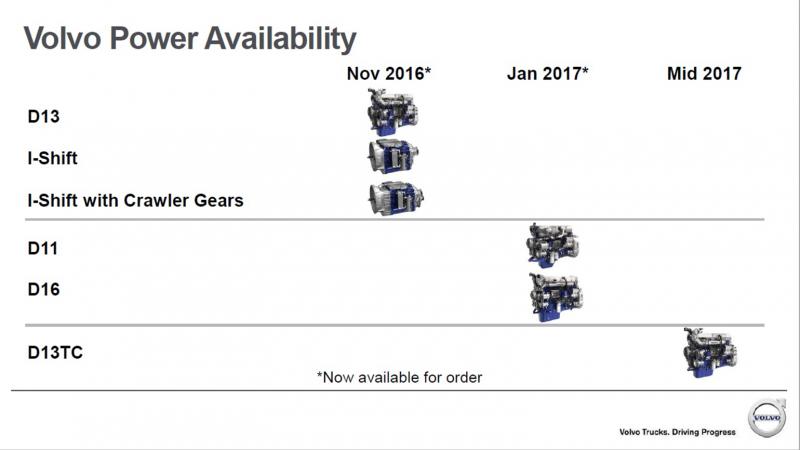
kscarbel2
Moderator-
Posts
18,886 -
Joined
-
Days Won
114
Content Type
Profiles
Forums
Gallery
Events
Blogs
BMT Wiki
Collections
Store
Everything posted by kscarbel2
-
May promises to make Brexit ‘a success’ The Financial Times / July 11, 2016 New Tory leader to become PM on Wednesday after rout of Leave group Theresa May will become Britain’s prime minister on Wednesday, promising to make a success of Brexit after she completed a dramatic rout of the rival Conservatives who led the campaign to take Britain out of the EU. Mrs May, the 59-year-old home secretary, was part of the campaign to keep Britain in the EU, but now finds herself picking up the pieces after the last remaining pro-Brexit Tory leadership candidate threw in the towel. Andrea Leadsom, the energy minister, announced at 12.15pm that she could not command the support of the party and abandoned a shortlived campaign that had been dogged by mis-steps and controversy. Mrs Leadsom’s friends said she had been in tears over the weekend and felt “under attack” after suggesting in a newspaper article that she was better placed than Mrs May to become prime minister because she was a mother. Her decision short-circuited a leadership contest only due to conclude on September 9 but the denouement reassured markets spooked by the leadership vacuum in Britain following the Brexit vote. The FTSE 250 stock index, the most UK-centric of the main London equity benchmarks, was 2.5 per cent higher after the identity of the next prime minister became clear. The FTSE 100 was up 0.9 per cent to a day-high of 6,654.59, led by strong gains in property-related stocks that have been hit hard since the vote for Brexit. Taylor Wimpey was the best single gainer, up 9.5 per cent. Speaking outside the Houses of Parliament, in her first public comments since becoming PM-in-waiting, Mrs May said she was honoured and humbled. Surrounded by those who will now be her MPs, she pointed to the need for strong leadership in what would be “difficult times”. Faced with uniting her party after a bitter referendum, she said: “Brexit means Brexit and we are going to make a success of it.” But Mrs May has said she will not invoke the Article 50 EU exit clause this year, and could yet come under pressure from Eurosceptics to pull the trigger to formalise Brexit. Mrs May will replace David Cameron in two days, once the formalities of the transition of power have been completed. Mr Cameron is set to chair his final cabinet meeting on Tuesday and hold a last Prime Minister’s Questions in the Commons on Wednesday, before going to Buckingham Palace to tender his resignation. Then Mrs May should head to the palace to “shake hands” and be formally invited to form a government. The home secretary will be only the second woman to occupy Number 10, a quarter of a century after Margaret Thatcher’s tearful departure. Pro-Brexit Tories had been confident they would inherit the party’s crown, but the ambitions of the campaign’s leaders have all been dashed in the tumultuous weeks that have followed the Leave vote. Boris Johnson, the former London mayor, had appeared set to be prime minister but was betrayed by Michael Gove, whose own leadership chances were thwarted when he finished a poor third in the ballot of Tory MPs. Mr Johnson had offered his support to Mrs Leadsom but has been low key in his backing in recent days. Mr Johnson, Mr Gove, Mrs Leadsom and the other leading Tories who campaigned to leave the EU have all issued statements of support for Mrs May. Graham Brady, chairman of the Tory backbench 1922 committee, announced that the leadership contest would be halted and that Mrs May would become party leader and prime minister without a ballot of members. Mr Johnson and Mr Gove are likely to be offered jobs in a May cabinet, while her old ally Philip Hammond, foreign secretary and a former businessman, has been mooted to replace George Osborne as chancellor. Mrs May launched her campaign to become prime minister in Birmingham on Monday with a promise to preside over a more responsible form of capitalism, tackling boardroom excess and predatory corporate takeovers. In a series of criticisms of Mr Osborne’s tenure at the Treasury, Mrs May said he had neglected productivity problems. She suggested that government-backed project bonds could be used to boost infrastructure. She called for a “proper industrial strategy” and a plan to develop all of Britain’s great cities, implying the chancellor had concentrated on boosting “one or even two of our great regional cities” — a reference to his focus on Manchester. Ms May also called for the government to take more powers to block predatory takeovers of important companies — citing Pfizer’s failed bid for AstraZeneca — and made another promise to tackle corporate tax evasion. Her speech made it clear that she saw high executive pay, irresponsible corporate behaviour and a widening gap between London and the rest of the country as significant factors in the Leave vote. “If you’re from an ordinary, working-class family, life is just much harder than many people in politics realise,” she said in an address reminiscent of some of the rhetoric of Ed Miliband, the former Labour leader, before the 2015 election. But as she finished her launch speech it was already emerging that Andrea Leadsom was about to hand the keys of Number 10 to her. Mrs Leadsom said she had been inspired to run for the leadership in the “best interests of the country” and felt the UK had a “bright future” outside the EU. But she added that she did not have sufficient support to lead a strong government. “A nine-week leadership campaign is highly undesirable,” she said. “A strong and unified government must move quickly to set out what an independent UK framework for business looks like.” Within hours of Mrs Leadsom’s announcement and Mrs May’s accession, the Tories were facing calls from Labour and the Liberal Democrats for a snap general election. Mrs May said she will not hold an early election to seek a new mandate but will continue as prime minister until the next scheduled poll in 2020. Jon Trickett, an ally of Jeremy Corbyn, the Labour leader, said there would be a “coronation” of an unelected prime minister. “It is crucial, given the instability caused by the Brexit vote, that the country has a democratically elected prime minister,” he said. “I am now putting the whole of the party on a general election footing.” Tim Farron, leader of the Liberal Democrats, said it was “inconceivable” that Mrs May should be crowned without winning an election in her own party — “let alone the country”. “There must be an election. The Conservatives must not be allowed to ignore the electorate. Their mandate is shattered and lies in ruins,” he said. “Britain deserves better than this Tory stitch-up. May has not set out an agenda, and has no right to govern. She has not won an election and the public must have their say.” .
-
Dallas Police Chief David Brown said on Monday that Texas state laws allowing civilians to carry firearms openly, as some did during the protest where five officers were fatally shot, present rising challenges to law enforcement, as he stepped into America's fierce debate over gun rights. A shooting incident in Michigan on Monday underscored the prevalence of gun violence in America and the danger faced by law enforcement, even as activists protest fatal shootings by police of two black men last week in Louisiana and Minnesota. Two sheriff's bailiffs were shot dead at a courthouse in St. Joseph in southwestern Michigan, and the shooter was also killed, Berrien County Sheriff Paul Bailey told reporters. President Barack Obama and others reiterated their calls for stricter guns laws after last month's massacre at a gay nightclub in Orlando, but many conservatives responded that such measures could infringe on the U.S. Constitution's protection of the right to bear arms. Conservative Texas is known for its gun culture, and state laws allow gun owners to carry their weapons in public. Some gun rights activists bring firearms to rallies as a political statement. Some did this at Thursday's march in Dallas. "It is increasingly challenging when people have AR-15's (a type of rifle) slung over, and shootings occur in a crowd. And they begin running, and we don’t know if they are a shooter or not," Brown said. "We don’t know who the 'good guy' versus who the 'bad guy' is, if everybody starts shooting." Seeing multiple people carrying rifles led police initially to believe they were under attack by multiple shooters. "I was asked, well, what's your opinion about guns? Well, ask the policymakers to do something and I'll give you an opinion," Brown said. "Do your job. We're doing ours. We're putting our lives on the line [unlike those in Washington who allegedly make policy]. Other aspects of government need to step up and help us," he added.
-
“I believe I saved a lot more black lives than Black Lives Matter,” said former New York City Mayor Rudy Giuliani. “I don't see what Black Lives Matter is doing for blacks other than isolating them.” “All it cares about is the police shooting of blacks. It doesn't care about the 90 percent of blacks that are killed by other blacks.” “If you want to deal with this on the black side, you've got to teach your children to be respectful of the police and you've got to teach your children that the real danger to them is not the police, the real danger to them 99 out of 100 times ... are other black kids who are going to kill them,” said Giuliani. “That's the way they're going to die.” “And the second reality in the black community is, there's too much violence in the black community. So a black will die one percent or less at the hands of the police and 99 percent at the hands of a civilian, most often another black.” “So if you want to protect black lives, then you've got to protect black lives, not just against police, which happens rarely, although with tremendous attention, and which happens every 14 hours in Chicago.” .
-
Dallas Police Chief David Brown is, by his own admission, "running on fumes." His brain "is fried." And he warned that this might be the last we hear from him for a while as he sets about the grim business of burying his dead. Brown and his family began receiving death threats almost immediately after the atrocity. “We are all worried for our safety. We are all on edge and being very careful.” The late-called press conference was intended to provide an update on Thursday night's shooting that left five officers dead, four under Brown's command. And it did......for a moment. But Brown quickly went off script, and let the world know he is gassed and spent, yes, but also fed up and furious. Brown, exhausted and unguarded, echoed what protesters said in the hours before a lone gunman opened fire on cops: Enough is enough. Brown said that Dallas police have been asked to shoulder every single "societal failure," from mental health to drug treatment to, even, the failure of the public school system and the fact that kids in southern Dallas are being raised by single moms. “We're asking cops to do too much in this country' said Brown. "We are. You're asking us to do too much. Every societal failure, we put it off on the cops to solve.” “Seventy percent of the African American community is being raised by single women, let's give it to the cops to solve that as well' said Brown. 'Policing was never meant to solve all those problems.” And, "here in Dallas, we've got a loose dog problem," he said. The response to that has been like the response to every other ailment that plagues the city, Brown said: "Let the cops handle it." Which is absolutely, undeniably true: When the people at Dallas City Hall tasked with actually dealing with loose and stray dogs -- Dallas Animal Services, code compliance, assistant city managers -- proved to be under-prepared and overwhelmed, and Antoinette Brown was mauled to death in South Dallas, the city did what the city does best. It told the cops to handle it, which is how the dog problem landed in Deputy Chief Rob Sherwin's lap -- Rob Sherwin, who is also overseeing the massive investigation into Thursday night's massacre. It wasn't even the first time Animal Services has had to call DPD for backup. When, in 2010, the manager of the city's animal shelter was indicted on felony charges of animal cruelty when he allowed a cat to die in the shelter's walls, Scott Walton, now a deputy chief, was named interim shelter manager. "Policing," said Brown on Monday, "was never meant to solve all those problems." Policing, he said, is hard enough without having to do everyone else's work. And it's harder still, given the low pay and the shrinking ranks as officers decamp for better-paying jobs in other cities surrounding Dallas. Earlier this year, Brown told the City Council he's being forced to "do less with less," and reminded it the force is down 200 officers since 2010. "Officers have been leaving because we're the lowest-paid in the area," he said. "We have a $44,000 starting pay" -- $44,658, to be precise, for a police officer trainee just putting on his newly starched uniform. Officers, he said, are "not feeling appreciated." They are "committed to their profession," he said, but also struggling to provide for their families. Brown demanded politicians get involved in making the country safer. He told them to "quit asking cops to do it for you." Brown said he's often asked about gun control. Out of his hands, he said. "Ask the policymakers to do something" about guns, he said, "then I'll give you an opinion on it." Some took issue with Brown’s comments that protesters pick up a job application and become a cop like he did. They thought it a glib response to genuine concerns from people tired of seeing people die at the hands of police. “We're hiring,” Brown said. “Get off that protest line and put an application in. And we'll put you in your neighborhood, and we'll help you resolve some of the problems you're protesting about.” Others suggested he run for president. Brown acknowledges the strength of feeling after the fatal shootings but urged people to do join the department rather than take to the streets to demonstrate. “I probably wouldn't protest or complain, I would get involved and do something about it,” he said. "One of the most difficult jobs in the country right now is being a police chief in a major city," he said. Especially one where five police officers were just murdered. The police chief said his own officers were so exhausted he had been forced to bring in another department to assist with security when President Barack Obama visits the city tomorrow. Arlington Police Department will work with the Secret Service during the president's visit as Brown is concerned about “the fatigue factor” with his own officers. Dr. Alex Eastman, deputy medical director with the Dallas Police Department, said the shootings “rocked some guys to their core that I thought were unshakable.” Brown said that the cops themselves were typically the last ones to complain as he considered introducing mandatory counseling for officers. 'We want to be Superman ... We are the last to ask for help.' He had seen attitudes and racial tensions improve during his three decades as a Dallas cop. 'We're in a much better place than when I was a young man here, but we have much to do – particularly in my profession.' After watching so many of his friends get caught up in the crack cocaine boom if the 1980s, Brown decided to join the department and worked his way up from patrol, to SWAT and internal affairs, until he landed the chief of police role. 'They took an inner city kid like me with flaws and made me their police chief,' he said. 'That's an extraordinary city and they have supported me through very difficult challenges. You don't see that everywhere.' Brown said he had no regrets about sending in the explosive to kill Johnson who had 'already killed us in a grave way, and officers were in surgery that didn't make it.' His only warning was not to 'bring the building down.' 'This wasn't an ethical dilemma for me,' he added. Several states are currently considering 'Blue Lives Matter' bills to make killing or attacking law enforcement officers a hate crime. Wisconsin Rep. David Steffen, a Green Bay Republican, announced a proposal for his state on Monday following the Dallas shooting. Louisiana became the first state to enact such legislation in May, allowing prosecutors to seek stronger penalties when police, firefighters and emergency medical crews are intentionally targeted because of their professions. Lawmakers in nine other states and at the federal level have floated similar proposals. Activists are criticizing the growing effort, saying professions don't belong alongside the other characteristics protected under hate crime laws, such as race, religion or disability.
-
Mack Valueliner
kscarbel2 replied to eddeere's topic in Antique and Classic Mack Trucks General Discussion
It's a Macungie-built Value-Liner (3-piece grille). That's an E6-350(R) 4-valve engine. The power passenger window (electric) is factory. It has an ST34 parabolic taperleaf rear suspension, ideal for a lightweight tractor, but wrong for a tipper. If the truck was originally red, it could have been an Amoco unit. The horn button will reveal. -
The DD16 still has turbocompounding. Look for it in the video at 0:22 The US market DD15TC was replaced by the DD15AI. With the second generation X-Pulse (aka. ACRS) common rail with pressures up to 2700 bar, they were able to remove the turbo compounding, which admittedly adds cost, complexity and weight. There's no reliability issue. --------------------------------------------------------------------------------------------------------------------------------------------------- New: the latest generation of the X-Pulse injection system. An important component of the new engine generation is the second generation of the X-Pulse injection system [aka. ACRS], the unique common rail system with pressure boosting in the injector and free modelling flexibility of the injection system. The maximum fuel pressure has been increased from 900 to 1,160 bar, resulting in a maximum injection pressure of 2,700 bar. The injection nozzle is an eight-hole nozzle (previously seven holes), increasing the maximum flow rate by around ten percent. Additional modifications include the piston bowl geometry, the sizeable increase in compression ratio from 17.3:1 to 18.3:1, along with a reduced exhaust gas recirculation rate (EGR rate). All these measures add up to a further improvement in efficiency across the entire engine performance map. This in turn lowers fuel consumption significantly. The optimum values in the consumption characteristic map have followed the new torque curve towards lower rev speeds. Systematically configuring the engine for low fuel consumption means that untreated NOx emissions rise. This is countered by the SCR technology featuring an innovative and efficient SCR catalytic converter. AdBlue consumption is therefore on a par with earlier Euro V engines at around five percent of fuel consumption. The cost balance is right: The up to three percent reduction in fuel consumption is countered only by a slight increase in the considerably lower-priced AdBlue for exhaust gas cleaning. In other words: For a yearly distance travelled of 130,000 km in long-distance transport and a consumption of approximately 28.5 litres/100 km on a challenging route, fully laden, every single Mercedes-Benz Actros with the second generation OM 471 (and OM472/DD15, OM473/DD16) engine saves approximately 1,100 litres of fuel per year and emits around three tonnes less CO2.
-
http://www.bigmacktrucks.com/topic/45838-volvo-trucks-north-america-press-conference-shippensburg-pa/#comment-337812 .
-
Dagens Industri / July 8, 2016 Volvo is cancelling its alliance with Russia's state-owned UralVagonZavod. Volvo says the cooperation is finished. However, Russian state purchasing agent JSC Rosoboronexport does not exclude a restart in cooperation. Russia has ordered for 2,000 of the 8x8 Atom infantry fighting vehicles developed by Volvo Group subsidiary Renault Trucks Defense and UralVagonZavod. The Atom is a license-built version of Renault Trucks Defense’s 8x8 VBCI infantry fighting vehicle (http://www.renault-trucks-defense.eu/Defense/DRIVELINE-VBCI/VBCI). Related reading: http://www.bigmacktrucks.com/topic/34536-mack-military/ .
-
Ford Trucks Press Release / July 1, 2016 Ford’s exciting new Cargo heavy truck range is available with ZF’s advanced “Traxon” 12-speed dual-countershaft modular AMT transmission system. Eco Mode times each gear change for optimized fuel economy. In Power Mode, the transmission selects the most appropriate gear for maximum performance and enhanced climbing capability. Particularly suited in vocational operations, Rocking Mode allows the vehicle to be rocked back and forth when stuck. Quickly releasing the accelerator disengages the clutch, allowing the truck to roll back for a new attempt. . Ford Trucks and You – "Sharing the Load" At Ford Trucks, we’re serious about trucking. It's why we designed the new 2016 Cargo heavy truck range from the ground up to meet your needs and expectations. See your authorized Ford heavy truck dealer for details, or visit the global Ford heavy truck website at https://www.fordtrucks.com.tr/ .
-
Scania Group Press Release / July 8, 2016 A brand new smart watch for truck drivers caters to the well-being of both truck and driver. They are both integral components of the job – and without one, the other will be standing still by the side of the road. With essential truck and fleet management data covered in the app "Data Watch", the Scania version of the Apple watch puts equal focus on driver centric features with the "Watch Me" app. Many smart watches do general health and fitness tracking, but Scania supplements this with features specifically designed for jobs where long periods of sitting are combined with short bursts of heavy physical labor. And ways to keep the driver safe and healthy both in and outside the truck. - Injury prevention through active recovery - Increased alertness and cognitive ability through relax recovery - Fall detection and assistance for accidents while loading/unloading cargo. - Smart notifications for weather changes that may affect driving conditions. So from Scania, to professional drivers everywhere: Here's an even smarter smart watch. .
-
Heavy Duty Trucking / July 8, 2016 Ohio state agencies have teamed up to develop procedures for deaf or hearing-impaired Ohioans who qualify for a federal hearing-exemption waiver to train and test for obtaining a Commercial Driver’s License (CDL). While the process to obtain a hearing exemption waiver was instituted by the Federal Motor Carrier Safety Administration in 2013, the three state agencies-- Ohio Bureau of Motor Vehicles, Office of Criminal Justice Services and Opportunities for Ohioans with Disabilities-- contend that the Buckeye State is “leading the way as one of the first states to implement testing.” BMV, OCJS and OOD said on July 6 that they took the proactive step of developing the test procedures, which have been distributed to the hearing-impaired community as well as driver-training schools. Since implementing the new CDL testing process, the agencies have seen “immediate interest from individuals with hearing impairments wanting to learn more about pursuing a CDL.” At last report, over a dozen persons were in various phases of obtaining their waiver, training or testing, with at least two individuals successfully obtaining a CDL and securing employment as a commercial driver. OOD approached BMV to collaborate on the project as an outgrowth of the Governor’s Workforce Integration Task Force. Created by the General Assembly in 2014, WIT was charged with gathering and analyzing data to make recommendations to develop effective strategies aimed at helping Ohioans who are deaf or blind reach their highest employment potential. “This collaboration is another example of Ohio breaking down barriers to employment for individuals with disabilities,” said Kevin L. Miller, executive director of OOD. “It means jobs for Ohioans and an expanding workforce for Ohio employers.” “We are proud that this partnership has helped set standards and guidelines for CDL testing for the hearing impaired community in Ohio,” added BMV Registrar Don Petit. Calling truck-driving an “in-demand occupation” in the state, the agencies noted that, between April 2014 and May 2016, some 28,000 job openings with a CDL requirement were posted. The CDL testing is available to candidates 18 years and older holding a valid Ohio driver’s license. They must first secure an FMCSA hearing-exemption waiver and then a CDL Temporary Instruction Permit Identification Card. The TPIC is acquired by passing vision and knowledge testing. The CDL testing itself requires passing a three-part skills test within three hours. In addition, BMV and OOD are developing a video with American Sign Language (ASL) that explains the requirements and testing process. The video will be available through both the BMV and OOD websites this fall so that individuals, driving schools and employers, can learn about the testing and licensure process.
-
On Sunday, Dallas Mayor Mike Rawlings said marchers carrying weapons and dressed in body armor had distracted law enforcement from the actual gunman on Thursday. He said that other individuals carrying guns on the scene “took our eye off the ball for a moment”. “You can carry a rifle legally and when you have gunfire going on, you usually go with the person that’s got a gun,” he said. “And so our police grabbed some of those individuals, took them to police headquarters and worked it out and figured out that they were not the shooters. But that is one of the real issues with the gun rights issues that we face – that in the middle of a firefight, it’s hard [impossible] to pick out the good guys and the bad guys.” The Dallas shooting illustrated the way people who openly carry guns can hinder law enforcement responses to active shooter scenarios. Dallas police said up to 30 people were carrying rifles during a protest on the night that a man opened fire on police officers, complicating law enforcement’s attempts to identify the gunman. Not a single one of these people carrying firearms out there in (Dallas) Texas caught this guy in what he was doing. It drained law enforcement resources and subjected citizens to being unnecessarily taken into custody. We should all be very grateful that nobody else got hurt. -------------------------------------------------------------------------------------------------------- Why would a civilian in the United States ever need to carry an assault rifle in public? Unless they plan to use it? Or it makes them feel “bigger” Last time I checked, America had not (yet) become a lawless Somalia-like place. There's no just reason for fellow Americans to be carrying assault rifles around myself, my spouse and my children's families. .
-
"When there are 60 shootings in Chicago over the 4th of July and 14 murders and Black Lives Matter is nonexistent, and then there's one police murder of very questionable circumstances and we hear from Black Lives Matter, we wonder, do black lives matter or only the very few black lives that are killed by white policeman." Former New York City Mayor Rudy Giuliani .
-
The Wall Street Journal / July 8, 2016 Trucking companies cut payrolls by 6,300 jobs amid tepid shipping demand, excess capacity Transportation companies stayed out of the U.S. employment surge in June, as trucking and rail operators slashed thousands of jobs, the U.S. Labor Department said Friday. Trucking companies cut 6,300 jobs last month, the biggest month-to-month reduction so far this year in a business that has been scaling back capacity amid tepid demand and declining pricing leverage. Several of the nation’s largest carriers have warned of lower second-quarter profits while new heavy-duty truck orders have reached their lowest point in years. Freight rail operators, hit by steep declines in energy shipments, continued to cut jobs with 1,600 fewer jobs in June. Railroads have cut their employment rolls by 29,600 jobs in the past 12 months. Hiring by warehousing and storage companies remained strong, however, with 4,700 new jobs in June, extending steady growth for a total expansion of 54,600 jobs in the last year. Courier and messenger companies added 1,300 jobs in their fourth consecutive month of growth. Both sectors support e-commerce fulfillment and benefit from the continuing growth of online shopping. U.S. payrolls in total rose by 287,000 jobs in June, surpassing economists’ expectations and calming fears of an economic slowdown. Analysts say job gains across most other sectors may be a good sign for trucking companies, but not a great one because most new jobs were in the service sector. Employment in goods-producing industries increased by 9,000 jobs, the Labor Department’s Bureau of Labor Statistics said, after declining in May. The jobs report and other economic indicators give reason to be “cautiously optimistic,” said Rosalyn Wilson, founder and president of supply chain consultancy FreightMatters. But, she said, most gains “were in the service sector as opposed to being in manufacturing or construction,” and while consumer spending is up, hospitality and retail accounted for much of the growth. “As far as benefit to the transportation industry, I don’t see a lot going on that helps them,” Ms. Wilson said. The overall transportation and logistics sector lost 9,400 jobs from May to June, with trucking accounting for the steepest cutbacks. Transit and passenger ground transportation operators cut employment by 6,000 jobs. Manufacturers, which typically have a strong impact on trucking demand, grew by 14,000 jobs in June, while adjusted figures show 16,000 cuts a month earlier, reflecting recent growth in manufacturing activity. But the sector is still down 42,000 jobs since the beginning of the year, and 29,000 jobs since last June. “This month’s job figures come as a mild relief after May’s dismal numbers. But while the overall economy grew, manufacturing and import-sensitive sectors in particular are still lagging behind,” said Scott Paul, president of the Alliance for American Manufacturing industry group. “Steel and other industries in the manufacturing sector continue to feel the effects of global overcapacity, exports are being squeezed by the strong dollar, and last month’s Brexit will only increase these pressures,” he said.
-
“Americans of all races and all backgrounds are rightly outraged by the inexcusable attacks on police, whether it’s in Dallas or anyplace else.” President Barrack Obama ---------------------------------------------------------------------------------------------------- Any president would really have to say that. Still, with respect, I disagree. I don’t see any outrage in 99.9% of Americans, because they have become numb to the ocean of violence flooding our country. It was just the other week that an “individual’ killed 49 Americans (and/or illegal immigrants) and injured 53 others. But that was last week. It’s more or less all forgotten as we head into a new week. School killings? Commonplace now. No one pays attention anymore except the parents who have been robbed of their children. Government, or the unseen individuals behind it, are responsible for the management of the country. And frankly, they’re doing a pretty poor job.
-
We aim to please. Glad you're all set.
-
In the world of the former Mack Trucks, with a part numbering system never equaled, a suffix letter like "A" or "B" denotes an engineering improvement. It used to be "A" for years. Under Volvo, "B" might mean they made it "cheaper", though your price still went up.
-
Baton Rouge "We just can't allow them to block the highway for the purpose of blocking the highway," said Baton Rouge Police Chief Carl Dabadie Jr., at a press conference Sunday to explain arrests. Overall, he said, the department has allowed the state police and sheriff's deputies to take the lead at protests "out of respect" to the community. "My officers are human. They are tired. They are scared," Dabadie said. .
-
Protesters in Oakland block I-880 in both directions Protests started Thursday around 7 p.m. when a group of approximately 100 demonstrators gathered at Frank Ogawa Plaza, in response to the fatal police shootings of Alton Sterling in Louisiana and Philando Castile in Minnesota. The group quickly grew to about 2,000 people. As the demonstrators made their way toward 6th Street, a group of approximately 1,000 went onto the freeway and blocked traffic in both directions, police said. Police have reported vandalism to the Police Administration Building, including paint on the doors, scratches on glass and broken glass. There have been other incidents of vandalism reported including broken windows and graffiti at nearby businesses, and a Caltrans signboard was set on fire on the highway, police said. .
-
WRDW 12/Atlanta / July 8, 2016 Protesters in downtown Atlanta have blocked part of Interstate 75/85. An estimated 2,000 people are marching on a ramp to the interstate following a week of shooting across the country. Atlanta’s African-American Mayor, Mohammed Kasim Reed, tweeted a warning to protesters not to block the Connector. That tweet was ignored. Reed tweeted “If you enter the highway, you endanger your own life, the lives of innocent motorists & the lives of our officers. We are better than that,” Earlier, he tweeted: "Today we have had less than ten people arrested during what has been a peaceful protest. We urge anyone protesting not to enter the highway." .
BigMackTrucks.com
BigMackTrucks.com is a support forum for antique, classic and modern Mack Trucks! The forum is owned and maintained by Watt's Truck Center, Inc. an independent, full service Mack dealer. The forums are not affiliated with Mack Trucks, Inc.
Our Vendors and Advertisers
Thank you for your support!














